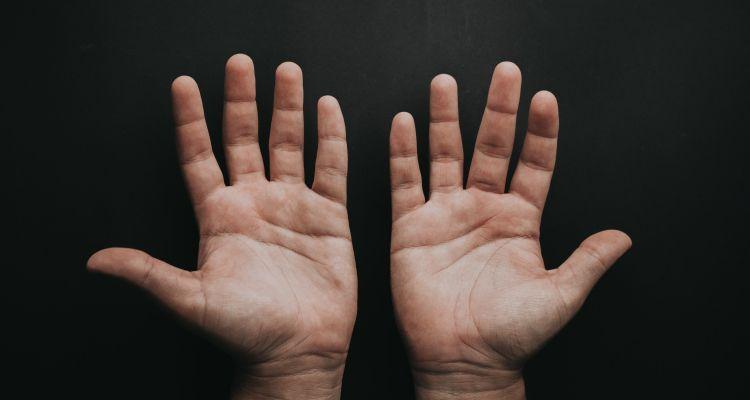
Hives - Cause, symptoms and treatment
Updated on 02. November 2023
Hives, also called urticaria, is a skin disease characterised by itchy wheals. The name for the condition comes from the old German word "næssel", which means "stinging nettle". The term refers to the similarity of the wheals in hives to those caused by touching stinging nettles.
Hives Brief overview:
- Causes: Increased activity of immune cells
- Symptoms: Itching, Red wheals, Swelling, Hot skin
- Prevention: Not known
- Treatment: UV light therapy, medication
What are the symptoms of hives?
The symptoms of hives mainly affect the skin. However, in some cases, other physical symptoms may also be present:
- Itching: Severe itching is the most common symptom of hives and can be very distressing.
- Red, raised wheals: These can appear on different parts of the body and vary in size and shape.
- Swelling: Hives may be accompanied by swelling of the skin, especially around the eyes and lips.
- Angioedema: Some patients experience swelling due to water retention in the skin, which occurs with hives on the face. Angioedema can occur both at the same time as wheals or as the only symptom.
- Hot skin: Most patients complain of uncomfortably overheated skin.
- Headache and joint pain: When hives are caused by inflammation in the body, headache and joint pain are also more common.
- Fever: Hives cause fever in some affected people, especially if the cause of the hives is infectious.
- Pain: When there is inflammation in the body or acute flare-ups, hives can also cause pain.
Is hives dangerous?
Hives are very unpleasant for the affected patients, but not dangerous. In the case of an allergic form, however, it is imperative to watch out for anaphylactic shock. If, in addition to the symptoms, circulatory fluctuations, palpitations, circulatory weakness and shortness of breath occur, a doctor should be consulted immediately. Patients should also be careful with angioedema. If swellings form in the area of the airways, this can lead to acute shortness of breath.
What is the course of hives?
Hives occur in episodes, mainly at night. In many forms of hives, the symptoms subside within minutes or hours, at the latest after appropriate medication. Often, the symptoms flare up again in the next few days.
How can I distinguish hives from other skin conditions?
In many cases, hives can be clearly recognised by the characteristic wheals on the skin. Many skin diseases such as [eczema]() or [neurodermatitis]() cause severe itching on the skin. Unlike other diseases, scratching with the fingernails does not relieve urticaria. Instead, affected people rub their fingertips over the skin areas. This results in fewer inflamed areas of skin in hives.
What is the cause of hives?
The cause of hives is an increased activity of immune cells, so-called mast cells. These release histamine, a messenger substance that promotes inflammation. This messenger causes the veins in the body to dilate and the skin vessels to become more permeable. As a result, symptoms such as wheals, swellings and itching develop in the deeper layers of the skin.
What are the different forms of hives?
Urticaria is divided into different forms. It is commonly differentiated according to the trigger and duration:
- Spontaneous urticaria: In spontaneous urticaria, the characteristic wheals usually form all over the body. If the symptoms heal within six weeks, it is called acute spontaneous urticaria. This is often the result of an infection. Another cause can be an allergic reaction to a wasp sting, a food or a medicine. Chronic spontaneous hives take much longer to heal and can last for several months. The triggers are often similar to the acute form, but affect the body for longer. These can be a chronic illness, a long-term medication, food or cosmetics.
- Physical hives: Exposure to external stimuli such as cold, heat, UVA light triggers the messenger substances. Abrasive clothing or scratching the skin can also trigger hives.
- Other forms of urticaria: Other forms include sweating urticaria, which can be triggered by sweating profusely during exercise, hot bathing or spicy food. Staying in water too long or physical exertion can also trigger hives. A common form is contact urticaria, which can be caused by touching chemicals, cleaning agents or poisonous plants.
What are the known triggers for spontaneous hives?
The triggers for hives are very different. In about 20% of patients, no cause can be identified.
- Allergies: These can be food allergies, drug allergies, insect bites and stings, cosmetics and other substances.
- Autoimmune diseases: Hives can also be a symptom of autoimmune diseases such as lupus or thyroid disease.
- Infectious diseases: Some infectious diseases, such as hepatitis, mononucleosis and others, can cause hives.
Do I need to see a doctor for hives?
Hives are a symptomatic condition that can have different causes. A doctor can more easily identify the cause of hives. A doctor should therefore be consulted for quick and effective treatment.
Is hives contagious?
Hives are caused by the body's individual reaction to different triggers. Therefore, the disease is not contagious.
Can hives be triggered by Corona?
In several reports, hives have been observed together with corona disease. It is suspected that the virus stimulates the immune cells. Booster vaccination can also trigger hives in rare cases.
How is hives treated?
Hives cannot be cured. Since the condition is often just a sign of another condition, the cause of the hives should be clarified. If the hives are caused by certain triggers, these should be avoided at all costs. This can reduce or prevent the symptoms. In about 80% of patients, the trigger can be found. Generally, the disease usually disappears on its own.
What medicines help against hives?
Since hives cannot be cured, treatment focuses on the symptoms. There are some effective medications available for this.
- Antihistamines: These medicines help to relieve the swelling and itching. The active ingredients block the histamine that causes the symptoms. There are both over-the-counter and prescription antihistamines.
- Corticosteroids: If the hives are severe or unbearable, the doctor may prescribe corticosteroids such as cortisone. This will reduce the inflammation and relieve the symptoms.
- Immunoglobulins: A special type of protein called immunoglobulins can be given in severe cases of hives to relieve the symptoms.
What else helps against hives?
In certain forms of hives, UV light therapy can relieve the symptoms.
In mild cases, treating symptoms such as itching and heat by using moisturisers can help.
What home remedies help with hives?
There are some home remedies that can help relieve the symptoms of hives.
- Cold water: A cold water bath or cold compress can help relieve itching and reduce swelling. The cold causes the blood vessels to contract and reduces the release of histamine.
- Curd: Applying a thick layer of curd to the affected area and leaving it on for at least 30 minutes will help with the symptoms.
- Aloe vera: Aloe vera has anti-inflammatory properties and can help reduce swelling and relieve itching.
- Witch hazel: Witch hazel has anti-itching and anti-inflammatory properties. At the same time, witch hazel contracts the vessels and thus reduces histamine release.
How is hives treated in children?
Hives in children are usually caused by an infection such as flu, otitis media or tonsillitis. Because hives in babies and children usually only last a few days, they can first be treated with home remedies. To be on the safe side, a paediatrician should be consulted. If the hives in toddlers or babies are very itchy, the doctor can also prescribe histamines. However, the dosage must be individually adjusted, so over-the-counter products should not be used without consultation.
Is hives dangerous during pregnancy?
The hormonal changes caused by pregnancy can favour hives or cause them to reappear. If the symptoms are severe, such as itching, the doctor in charge will decide on possible medication. However, it can also happen that an existing urticaria suddenly disappears. There is no risk of transmission for the unborn baby.

Hameli's vision
Go to Vision
Vaginal Fungus - Symptoms, Causes & Treatment
Go to Vaginal mycosis
Dry skin - What helps against it?
Go to Dry skin
Witch hazel - varieties, cutting, effect, & products
Go to Witch Hazel
Recognise and treat coccygeal fistula
Go to Coccygeal fistula
Anal fistula - symptoms, causes & treatment
Go to Anal fistula
Labial tear - Symptoms, Causes & Treatment
Go to Labial tear
Intertrigo - Cause, symptoms and treatment of the skin wolf
Go to Intertrigo
Anal abscess: symptoms, recognition, causes & treatment
Go to Anal abscess
Chickenpox - symptoms, vaccination, infection and treatment | Hamelis
Go to Chickenpox
Seborrhoeic Eczema - Symptoms, Causes & Treatment
Go to Seborrhoeic eczema
Anal fissure - Symptoms. Causes & home remedies
Go to Anal fissure
Vaginal dryness - symptoms, causes & treatment
Go to Vaginal dryness
Hamelis experts
Go to Experts
Rose lichen - symptoms, causes and treatment
Go to Rose lichen
Scars - treatment and removal
Go to Scar
Ringworm: Symptoms, Causes & Treatment
Go to Ringworm
Scabies - symptoms, cause and treatment
Go to Scabies
Treat anal eczema sustainably
Go to Anal eczema
Eczema - symptoms, causes and treatment
Go to Eczema
Contact allergy - symptoms and treatment
Go to Contact allergy
Treat stubborn nail fungus
Go to Nail fungus
Crabs - Intimate area, symptoms & treatment
Go to Crabs
Pruritus - Causes, symptoms and treatment
Go to Pruritus
Rosacea on the face - symptoms, causes and treatment
Go to Rosacea
Perioral dermatitis - symptoms, treatment & home remedies
Go to Perioral dermatitis
Skin fungus - cause, symptoms and treatment
Go to Skin fungus
Perineal tear - origin, degrees & causes
Go to Perineal laceration
Anal prolapse: symptoms, causes, treatment
Go to Anal prolapse
Skin rash - causes and treatment
Go to Skin rash
Genital herpes - woman, man & symptoms
Go to Genital herpes
Atopic dermatitis in children, adults and pets
Go to Atopic dermatitis
Angioedema - symptoms, causes and therapy
Go to Angioedema
Nappy dermatitis - cause and treatment of sore baby bottom
Go to Diaper rash
Sunburn - symptoms, duration & what helps?
Go to Sunburn
